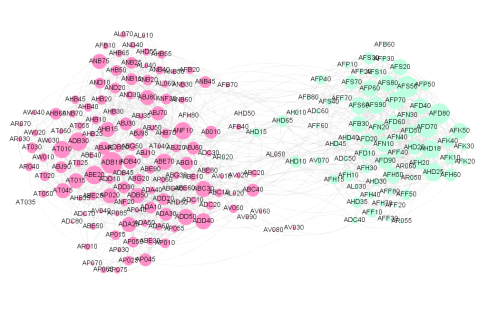 The purpose of this paper is to illustrate the interconnectedness of TRB standing committees using social network analysis. Analyzing co-membership of these research committees indicates the degree to which committees have the potential to collaborate and share information. The TRB member database was used to analyze membership across the 210 standing committees. Members serving on multiple committees create the network ties, which means that one or more members may be sharing information and creating partnerships between members and committees. This leads to inter-organizational knowledge transfer which is certainly a benefit of information sharing that occurs at the individual and committee levels that can extend far beyond TRB. The results of the analysis are especially valuable for committees attempting to forge strategic research partnerships and interdisciplinary relationships that may result in research opportunities through new or expanded topics. The analysis provides insight into the general characteristics of TRB committees and their members, which is useful for making comparisons. The Transportation and Sustainability Committee (ADD40) is used as a case study to illustrate how the results of social network analysis can be applied at the committee level. Download full paper.
The purpose of this paper is to illustrate the interconnectedness of TRB standing committees using social network analysis. Analyzing co-membership of these research committees indicates the degree to which committees have the potential to collaborate and share information. The TRB member database was used to analyze membership across the 210 standing committees. Members serving on multiple committees create the network ties, which means that one or more members may be sharing information and creating partnerships between members and committees. This leads to inter-organizational knowledge transfer which is certainly a benefit of information sharing that occurs at the individual and committee levels that can extend far beyond TRB. The results of the analysis are especially valuable for committees attempting to forge strategic research partnerships and interdisciplinary relationships that may result in research opportunities through new or expanded topics. The analysis provides insight into the general characteristics of TRB committees and their members, which is useful for making comparisons. The Transportation and Sustainability Committee (ADD40) is used as a case study to illustrate how the results of social network analysis can be applied at the committee level. Download full paper.
Perspectives on Tom
Professional Affiliation
